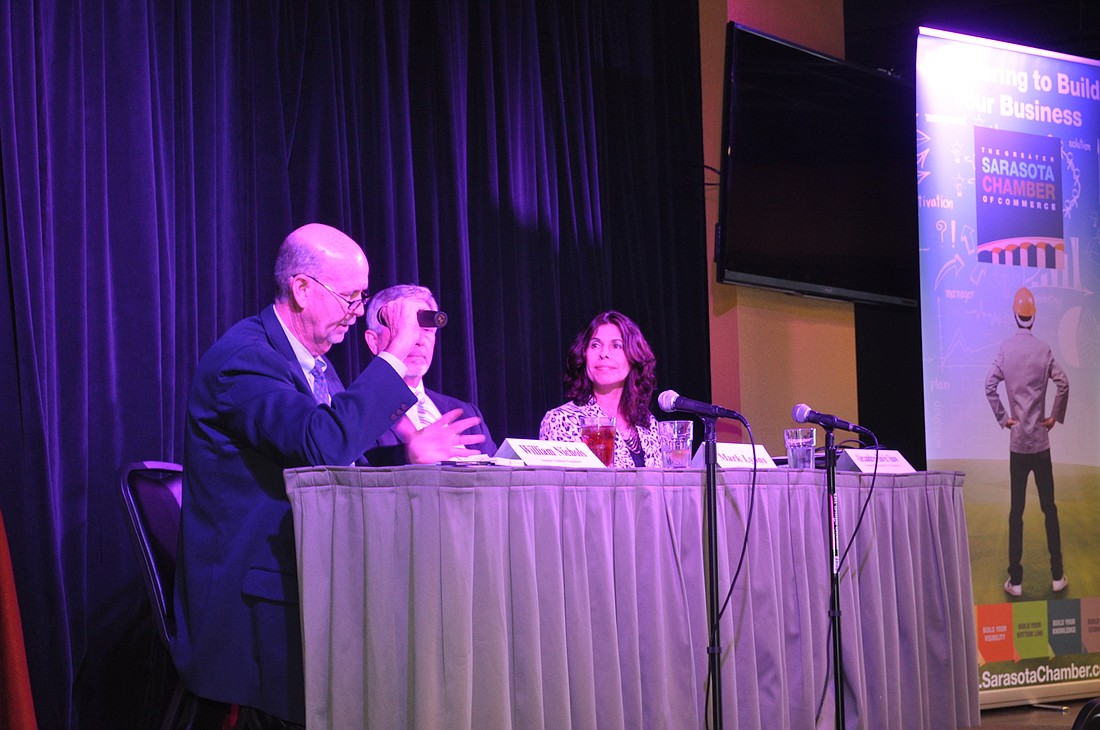- April 30, 2024
-
-
Loading

Loading

Bill Nichols, Public Works project manager, has been working on instituting a wayfinding program in the city for nearly five years.
Over that time, he says, he’s had to deal with a series of delays and coordination issues that have put the program years behind schedule. Although city staff is hopeful that major progress can be made on its wayfinding program, residents in attendance at a Jan. 22 presentation were still critical of the city’s current approach to implementation.
Those residents took issue with the proposed phasing of the project, designed to help visitors and residents navigate the city. The first two phases focus on signs welcoming people to the city and directing drivers to parking and landmarks. The final two phases, for which funding is still a question mark, are aimed at helping pedestrians downtown via signs and kiosks.
The consensus was that the latter two phases should have a higher priority. Rod Warner, an advocate for roundabouts in Sarasota, said visitors downtown need more help.
“We need wayfinding the most downtown,” Warner said. “When I hear (the phases), I'm thinking phase four should be phase one.”
The commission first approved a wayfinding project in 2004. Initially, the work went through a year of prolonged phases: The city secured funding in 2006, hired a consultant in 2007 and gathered community input in 2008 and 2009.
At that point, work with the Florida Department of Transportation began and the project was put out to bid. The bids came in higher than anticipated, and FDOT said it wouldn’t be able to authorize permits for the city’s initial proposal.
As the city has worked to meet FDOT standards, a bevy of issues have arisen, Nichols said. The total number of signs was a sticking point — cities such as Orlando had about 80 signs in their wayfinding programs; Sarasota’s plans called for 342.
That number has been reduced to 237, but the number of signs was an issue for at least one person in attendance at the presentation. Lou Costa has led efforts to cut down on “sign pollution” in Sarasota, and was dismayed by the prospect of adding so many new ones. He said that, in cities such as Hilton Head, S.C., and Asheville, N.C., the government has made efforts to have as few signs as possible because of aesthetics.
“I would love to take (City Commissioners) for a drive and show them how you have too many signs right now in the city,” Costa said.
Although staff indicated they wouldn’t bring the topic to the City Commission for consideration until the summer, Vice Mayor Susan Chapman, who was in attendance, said the board could address some of the concerns surrounding the project sooner.
“If that’s what people want, I don’t see why we wouldn’t,” Chapman said.